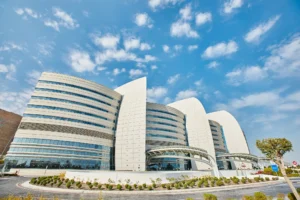As the world moves into 2023, the Medical Tourism industry is expressing cautious optimism that the sector can begin to recover from the setbacks due to Covid travel restrictions and global economic uncertainty.
Looking forward, most travel restrictions have been lifted, the populations of wealthier countries are multiple vaccinated, and there is a pent-up demand for delayed medical treatment combined with more economic confidence.
Medical Tourism crashed in 2020 as Covid concerns made travel more complex. For many, there was also increased economic insecurity. In terms of market value worldwide, medical tourism fell by 34% from US$105 billion in 2019 to US$71 billion in 2020 according to Glasgow Research & Consulting. It has since grown around 15% annually, and in 2023 the market value should exceed 2019 levels for the first time.

Relaxing travel restrictions
The year began with travel restrictions in most of the world, including the need to be vaccinated and have a negative test less than 24 hours before travel. In some cases, quarantine for up to fourteen days was required on arrival. Controls were gradually relaxed during the course of the year, and by mid-2022, travel restrictions for visitors to Europe and the US were largely removed. In December 2022, the EU recommended that there should be no travel restrictions on visitors from outside the EU.
The increased freedom to travel meant that medical tourism gradually rebounded, and several countries have introduced measures to take advantage of this.
In India, the government is planning a Heal in India promotional campaign to boost medical tourism in the country. A digital portal has been established to guide international patients through Indian healthcare options and project a global presence. The portal promises a simplified digital Medical Visa and emphasizes the availability of traditional Ayurvedic holistic treatments and conventional medicine.
India also hopes to profit from Russian visitors. In the wake of Russia’s invasion of Ukraine, the Asian powerhouse is one of a handful of countries, with Iran, China, South Korea, Turkey and Belarus, that accepts flights from Russia.
Major markets ready for rebound
Malaysia medical tourism
The revenue from medical tourists to Malaysia was growing by 16% annually prior to the pandemic, and the number of visitors reached 1.2 million in 2019, the majority being from Indonesia and China. However, overall tourist arrivals and receipts fell by 80% in 2020. Healthcare tourism revenue was effectively zero in 2021, but the country re-opened up fully to overseas visitors in 2022 and hopes to return to 2019 levels in 2025.
Thailand medical tourism
Neighbouring Thailand is a key competitor for Malaysia in the medical tourism market, and it saw a similar successive fall in visitors of more than 80% in 2020 and 2021. However, Thailand has a much bigger share of the world market, up to 9% according to some measures, and attracts visitors from the USA and Europe as well as Asia. To encourage a bounce back in the sector, the government is planning to introduce a one-year medical visa at a reduced cost from January 2023.
Thailand aims to expand health and wellness tourism on the country’s largest island, Phuket. Recently, the government approved a 5 billion baht ($131 million) budget to develop an international medical hub in Phuket.
Turkey medical tourism
Turkey saw remarkable growth in medical tourism in 2021, with the number of visitors rebounding from just 390,000 in 2020 to 640,000, almost as many as the 660,000 visitors in pre-Covid 2019. That rapid increase appears to have continued in 2022, with 880,00 visitors reported in the year’s first three quarters. The Turkish government offers a range of support measures for companies in the industry, including part-payment for overseas diagnostic centres, salaries of interpreters and costs to bring patients from abroad.
Recent warnings from the UK government about poor treatment received by British Nationals in Turkey may dampen this growth. The Foreign Office recommended that patients refer to the Health Turkiye portal website for medical providers who the Turkish Ministry of Health approves.
Upcoming medical tourism destinations
As overseas patients return in 2023, post-Covid competition will be fierce. Several countries with a relatively small footprint in the industry will be looking to grow their market share.
Brazil
Brazil is a large and populous country, but it has a relatively small footprint for medical tourism. Nevertheless, it has developed a niche reputation for cosmetic surgery and dental tourism, with eponymous treatments such as the BBL or Brazilian Butt Lift. 1.3 million cosmetic surgery treatments are carried out in the country annually (estimated 2020), although the majority of these are for nationals. Treatment costs are about half of those in the US, from where most overseas healthcare visitors originate. Costa Rica and Mexico also compete with Brazil for the cosmetic surgery market in the Americas.
Dubai and Abu Dhabi
Dubai is a leading hub for medical tourism in the Middle East, with a buoyant healthcare and wellness tourism market. According to the 2020 Medical Tourism index issued by the International Healthcare Research Centre (IHRC), Dubai is the number one medical tourism destination in the Arab world. The capital of the United Arab Emirates, Abu Dhabi, is an emerging option for tertiary treatments with well-established hospitals in Cleveland Clinic Abu Dhabi and Burjeel Holdings.
South Korea
South Korea is a growing player in Asia and has had strong government support to provide a sound foundation for medical tourism. The Korea Health Industry Development Institute (KHIDI) is a government-affiliated organization that promotes Korean medical services overseas. Korean medicine is renowned for excellence in oncology, cardiology and organ transplantation, as well as aesthetic-cosmetic treatment that gained popularity with the ‘k-beauty’ trend.
Visitor numbers were considerably lower than many neighbouring countries at 600,000 in 2019 but have recovered more rapidly. Russia, Mongolia and Kazakhstan are popular sources for patients, and the insecurity in the former Soviet bloc regions after the Ukraine invasion threatens this revenue.
Longevity wellness programs
It is widely recognized that the isolation caused by lockdowns, working from home, travel restrictions, and the existential threats of a global pandemic has brought mental health issues to the forefront. Demand for wellness retreats and holistic therapies is expected to grow by 20% annually in the coming years. Switzerland, India and Thailand are some countries leading the way with medical-based wellness programs. The science of longevity is an emerging theme in the global wellness market, and longevity research is attracting significant investment.
As the healthcare market is complex and rapidly changing, patients seeking treatment abroad can feel overwhelmed by the due diligence they should undertake before making a decision. Here is where Medical Travel Market can help. Our team of medical travel experts help patients find quality treatment options abroad, whether it is for dentistry, a hair transplant, a health check-up, orthopaedic surgery or anything else.
If you are considering treatment abroad, explore our network of trusted healthcare partners and contact us for a free consultation.















